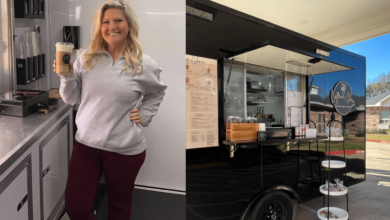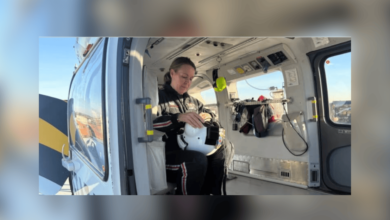Major review ‘supports use’ of simulated nurse learning

Simulated practice learning can be just as effective as traditional clinical placements in improving outcomes for pre-registration nursing students, such as knowledge, clinical judgement and critical thinking, a first-of-its-kind review has found.
Research published this week by the Council of Deans of Health (CoDH), in collaboration with Anglia Ruskin University, has spotlighted how simulation is able to transform practice learning in nurse education across the UK.
Simulation in Nursing Education: An Evidence Base for the Future has evaluated the benefits and challenges that exist for education institutions that want to deliver simulated practice learning, as well as the experiences of students that are undertaking it.
Simulated practice learning uses a variety of methods to support students in developing their knowledge and skills, including the use of actors and roleplay, immersive rooms, manikins, computer programmes and virtual reality.
“Simulated practice learning is about enhancing practice, it’s not about replacing it”
Mary Edmonds
Megan Isherwood, policy officer at CoDH, told Nursing Times that, while simulation exists across many disciplines, in nursing there were “a lot more opportunities for it to be embraced”.
She noted that this piece of research was “one of the most highly anticipated pieces of work” the CoDH had produced for a long time.
“Members are really keen to have an evidence base to determine and showcase the value of simulated practice learning in nursing education,” she said.
The report comes as the NHS Long Term Workforce Plan committed to boosting simulated learning capacity in England, noting how it can reduce pressure on practice providers to produce placements.
Meanwhile, the Nursing and Midwifery Council (NMC) last year approved changes to its pre-registration education standards, which included increasing the number of allowed simulated practice hours from 300 to 600.
Dr Mary Edmonds, deputy dean of practice learning and simulation at Anglia Ruskin University, told Nursing Times that she felt this research would “open up the conversation” about the important role that simulation can play in nurse education.
She said: “In terms of what we set out to do [with the research], it feels like we did actually say ‘well yes simulated based learning can be, or be even more, effective when you’re measuring outcomes.”
The 114-page report was compromised of four research phases, which consulted existing literature around the subject as well as speaking to students and staff at higher education institutions (HEIs).
Nursing Times has broken down some of the key findings from each research phase.
Phase one: systematic review of primary studies and regulatory and national standards
This phase of the research looked at evidence from existing studies on simulated practice learning and found that it was able to replace some of the hours of learning on the same topic in clinical practice and that the effect “may improve success in student nurse evaluations”.
In addition, it found that, on average, simulated education “was as good or better than traditional education in improving student nurse assessment outcomes”.
Meanwhile, it said that a combination of simulated-based education and practice-based education was “more effective in improving outcomes” compared to clinical education alone.
Dr Edmonds said the literature “demonstrated that simulation has a role to play in the preparation and education of pre-registration nursing students”.
Phase two: a survey to assess organisational readiness for simulation-based education and the opportunities and challenges that exist for HEIs
Findings from this study revealed that educators were more confident using ‘low fidelity’ models of simulation, such as using manikins to do cannulation or using service users or actors to practise on in a role-play setting.
The report noted that this could be due to the “complexity of technology, the amount of education required to use it effectively, and the level of realism and immersion that can be achieved with technology”.
Dr Edmonds said: “When you use low-tech manikins, people manage that very well.
“But the more and more you’re using emerging technology, really high-tech technology, it tends to be not used as frequently because there’s not the confidence always with the staff.”
This part of the research also highlighted the need for commitment from senior leadership at HEIs, to ensure that simulation was given priority and the funding it needs to be effective.
“If you don’t get that buy-in from the leadership, then what you actually do with the university [and] what students receive is going to be very much affected,” said Dr Edmonds.
Phase three: a case study involving students and staff
For this part of the research, Anglia Ruskin conducted an in-depth case study of its second-year mental health and child nursing pre-registration students who engaged with simulation practice learning, as well as a focus group of practice supervisors.
The surveys of students found that most agreed that simulation had helped them increase in confidence and develop a range of skills that would be beneficial for their future roles as registered nurses.
Dr Edmonds explained that students felt there was an “increase in competence and a range of skills” when undertaking simulated learning.
She added: “This is one of the real benefits of simulation: you can practise these different skills and different scenarios, but in a safe environment, where nobody’s going to get hurt.”
Meanwhile, the focus group of practice supervisors showed that they had based the design of simulation practice around “gaps in knowledge and proficiencies that students found difficult to achieve in clinical placement areas”, said the report.
Dr Edmonds echoed this, noting that practice supervisors had design simulated learning with “real purpose”.
“The practice supervisors really felt that they could really target what they knew their students were struggling with,” she said.
Phase four: focus groups with CoDH members to capture their experiences of delivering simulation in pre-registration nursing programmes
The final phase of this research involved focus groups of universities who had applied for approval from the NMC for simulated practice learning and what their experience had been.
The report found that simulated practice learning had been incorporated across all years of the nursing curriculum, with an emphasis on the first year to aid the transition from theory to practice.
However, universities did identify a range of challenges around delivery, including issues to do with funding and availability of facilities, academic staff expertise and lack of student engagement.

Mary Edmonds
Dr Edmonds explained that the initial driver for universities to become approved had been due to the “demands of placements during Covid”, including a scarcity of suitable placements and rapid growth in student nurse numbers.
The report echoed this, and explained that simulated practice learning had provided an opportunity to enhance the student experience by allowing them to practise skills that were “challenging to achieve in clinical settings”.
Dr Edmonds noted: “A very strong message in our report from all the difference phases is that simulated practice learning is about enhancing practice, it’s not about replacing it.
“This is about how students can have that safe space, to practise and get feedback.”
Recommendations and moving the research forward
Dr Edmonds told Nursing Times that, for the first time, HEIs had “the evidence base to support the use of simulation-based practice learning in nurse education”.
“We’ve got a much better understanding [about] if universities wanted to do this, what they would need to do to self-assess,” she said.
The CoDH and Anglia Ruskin University concluded that the findings of the report provided “an important bedrock of evidence for future decisions such as regulatory and financial support for simulated learning”.
The organisations recommended that future policy work around simulated practice learning could include greater collaboration across the sector to share best practice and to co-produce the design, development and delivery of different scenarios.
In addition, it said that it would be helpful to establish clarity around terminology and guidance around simulated based education, as well as clarity on funding that is available to support simulation long term.







